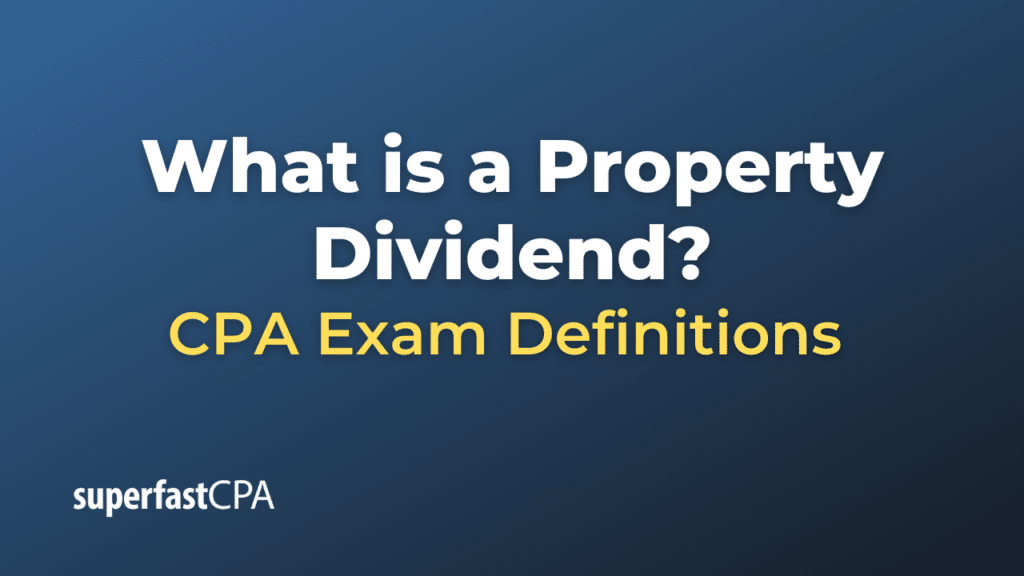Property Dividend
A property dividend, also known as a dividend in kind, is a type of dividend in which a company distributes property to its shareholders instead of cash or stock. This property can be in the form of physical assets, such as real estate, inventories, or equipment, or it can be in the form of securities, like shares in a subsidiary company or other types of investment assets.
Companies usually declare property dividends for several reasons:
- Lack of Cash: If a company does not have sufficient cash but still wants to provide a return to its shareholders, it may distribute property instead.
- Asset Restructuring: Sometimes, a company may wish to dispose of certain assets that are no longer central to its business. Distributing these assets as a property dividend is one way to do this.
- Tax Reasons: Depending on the jurisdiction, property dividends may be taxed differently than cash dividends. In some cases, it may be more tax-efficient for the company or its shareholders to distribute property instead of cash.
The value of the property to be distributed is normally determined by an independent appraisal. This value is then divided by the number of outstanding shares to determine the per-share dividend amount.
Property dividends are less common than cash or stock dividends and can be more complex to administer, but they can provide flexibility for companies and potential tax advantages for shareholders.
Example of a Property Dividend
Suppose ABC Corporation, a large manufacturing company, owns a small subsidiary, XYZ Corporation, which has been operating independently. ABC Corporation decides that XYZ Corporation no longer aligns with its long-term strategy.
Instead of selling XYZ Corporation, ABC Corporation’s management decides to distribute it to existing shareholders as a property dividend. An independent appraisal values XYZ Corporation at $10 million.
ABC Corporation announces that it will distribute XYZ Corporation as a property dividend. The shares of XYZ Corporation will be distributed proportionally to ABC Corporation’s current shareholders.
For instance, if a shareholder owns 1% of ABC Corporation’s outstanding shares, that shareholder will receive shares in XYZ Corporation worth $100,000 (which is 1% of $10 million). The shareholders of ABC Corporation then become direct shareholders of XYZ Corporation.
Please note that this is a simplified example. In reality, the process of distributing a subsidiary as a property dividend would involve numerous regulatory and logistical considerations. It’s also important to remember that such actions would have tax implications for both the company and the shareholders.













